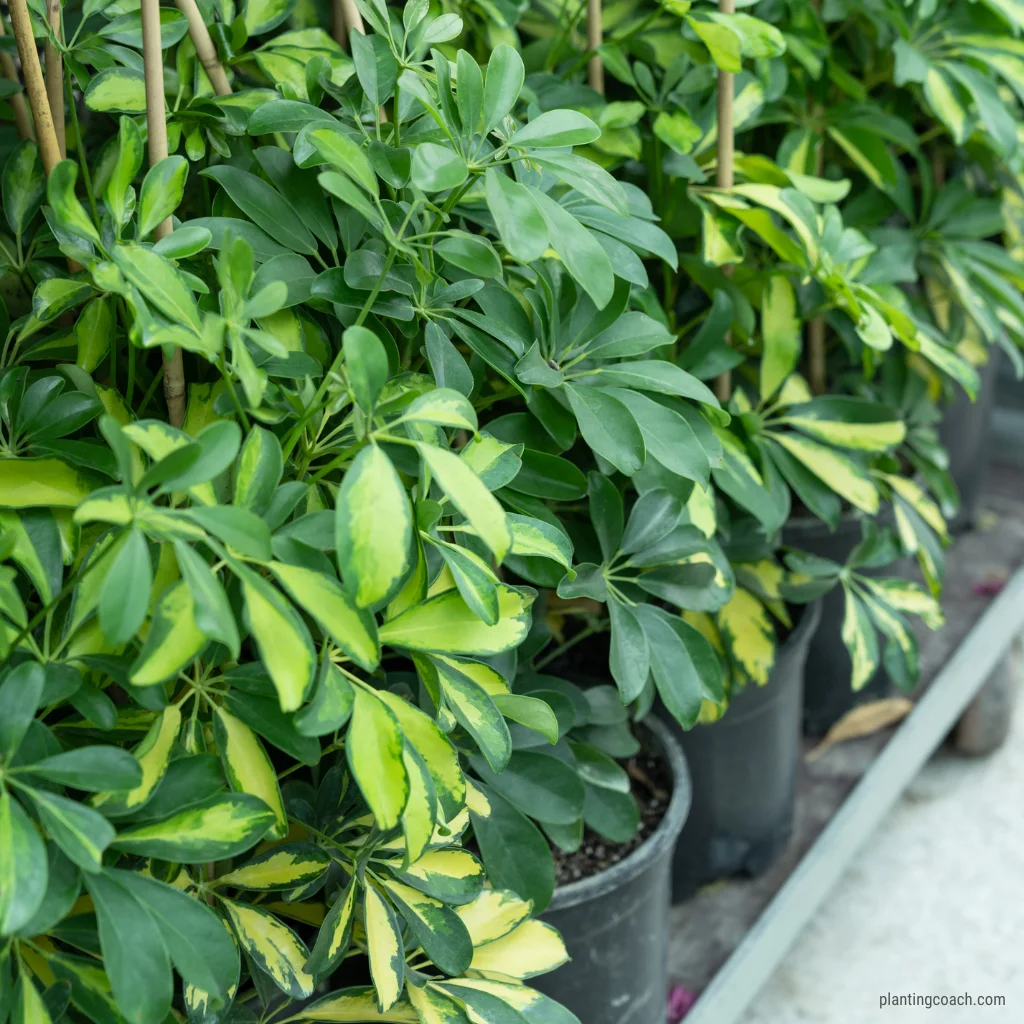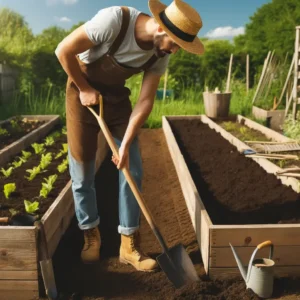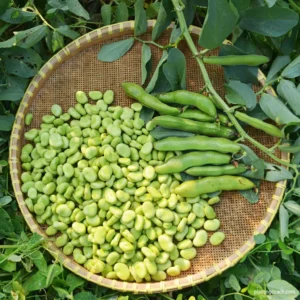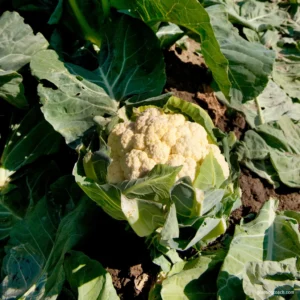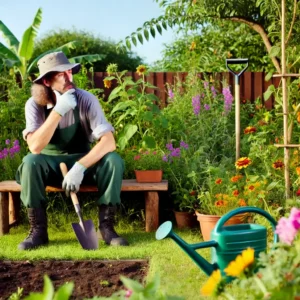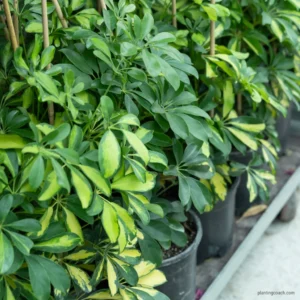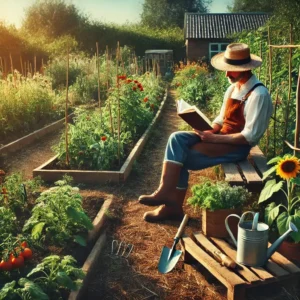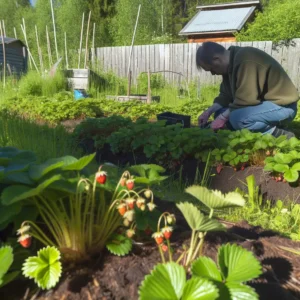The umbrella plant, also known as Schefflera, is a popular choice among houseplant enthusiasts due to its unique appearance and ease of care. Its common name comes from the way its glossy, green leaves spread out like the spokes of an umbrella, making it a charming addition to any indoor space. This plant isn’t just a beautiful addition to your home decor; it’s also known for its air-purifying qualities, capable of filtering indoor air pollutants, which makes it as beneficial as it is beautiful.
In this guide, we will explore the very ideas about How to Grow and Care for Umbrella Plant (Schefflera), as it can offer both attractive outdoor and practical benefits, making it a perfect choice for indoor gardeners.
Understanding the Umbrella Plant (Schefflera) and Dwarf Umbrella Tree
The umbrella tree is a tropical plant known for its distinctive, glossy, and broad leaves, which spread out from a central point like the spokes of an umbrella. This plant can grow quite tall in its natural environment but is also popular as a houseplant due to its attractive foliage and adaptability. Schefflera species are native to tropical and subtropical regions, particularly in Asia and the Pacific islands. They thrive in warm, humid environments but can adapt to indoor conditions with proper care.
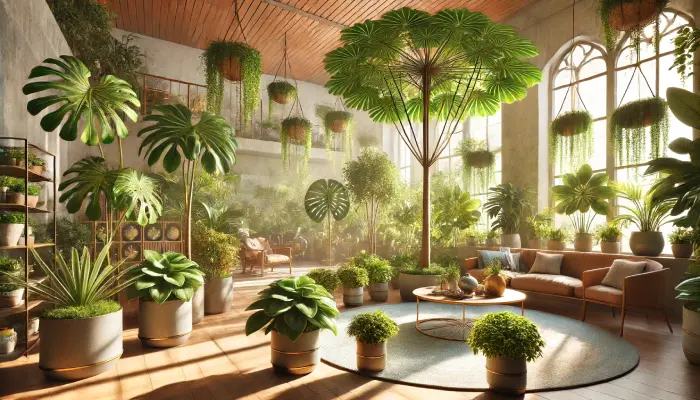
The umbrella plant family encompasses several varieties, but the most commonly found in homes are the Schefflera arboricola, also known as the dwarf umbrella tree, and the larger Schefflera actinophylla. The dwarf variety is particularly suited for indoor environments due to its compact size, typically growing between 4 to 6 feet tall, which is significantly smaller compared to its larger counterpart, which can reach over 15 feet in optimal conditions. Both types boast glossy, palmate leaves that radiate outward in a spoke-like fashion, creating a lush, green canopy.
The dwarf umbrella tree is ideal for those with limited space but who desire the tropical look of a larger Schefflera. These plants are attractive, robust, adaptable to various indoor conditions, and relatively easy to maintain, making them a popular choice among seasoned and starter plant enthusiasts.
How to Grow and Care for Umbrella Plant (Schefflera)
Best Practices for Umbrella Plant Care
Caring for an umbrella plant involves more than just occasional watering; it requires understanding its fundamental needs to thrive. Ideally, this plant prefers bright, indirect light but can also adapt to medium light conditions, which makes it versatile for various indoor settings. Consistency is vital when it comes to watering—allow the top inch of the soil to dry out before watering again to avoid over-saturation and root rot.
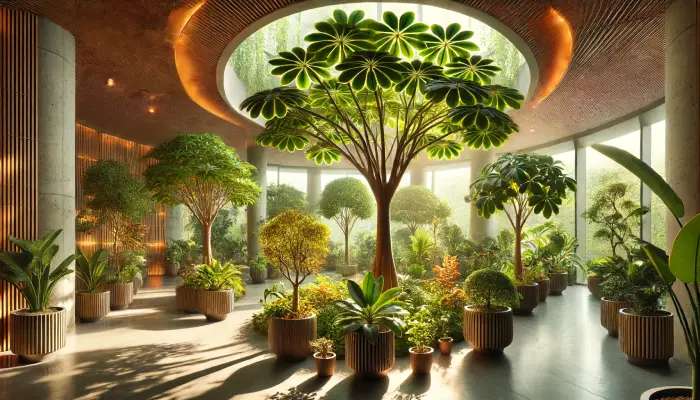
Using well-draining soil and a pot with adequate drainage holes is crucial to ensure excess water can escape, as standing water can lead to several health problems for the plant. Additionally, maintaining a stable environment free from drastic temperature changes and away from direct heat sources or cold drafts will promote healthier growth and prevent stress on the plant.
Mastering the Schefflera Growing Season
The growing season for Schefflera plants is primarily during the warmer months of spring and summer. During this period, the plant will exhibit the most vigorous growth, which requires adjusted care to accommodate its increased needs. This includes watering more frequently, as the plant will use more water than usual due to higher temperatures and potentially increased light exposure. Additionally, feeding your Schefflera with a balanced, water-soluble fertilizer once a month during this time will support its growth and vitality. As the season transitions to fall and winter, reducing watering and ceasing fertilization is essential to align with the plant’s natural dormancy period, helping it rest and prepare for the next growth cycle.
The Art of Repotting Umbrella Tree
Repotting an umbrella tree is a crucial aspect of its care that promotes healthy growth by providing fresh soil and more space for expanding roots. Typically, these plants require repotting every two to three years, which is best done during the early spring, just before the growing season begins. When repotting, select a new pot that is only slightly larger than the current one—about one to two inches in diameter—to avoid overwhelming the plant with too much soil, which can retain excess water and lead to root rot.
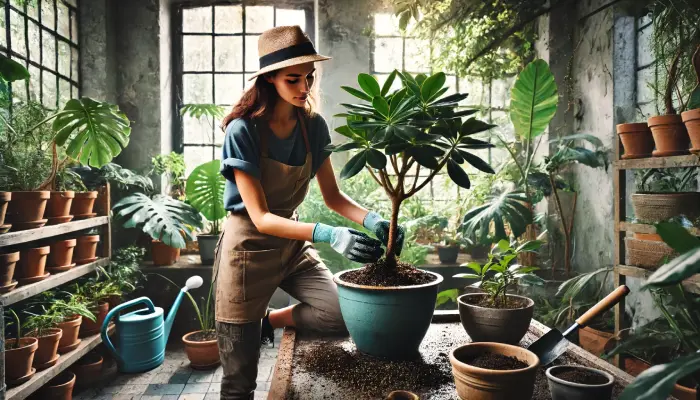
Use a high-quality, well-draining potting mix to ensure that water flows freely and doesn’t pool around the roots. During the repotting process, gently remove any dead or rotting roots to encourage healthier growth. Additionally, repotting provides an excellent opportunity to check the overall root health and treat any issues before they become severe, ensuring that your umbrella tree continues to thrive in its new home.
How to Prune an Umbrella Plant
Pruning an umbrella plant is essential not only for aesthetic reasons but also for the plant’s health. It should be pruned periodically to encourage a denser growth pattern and to remove any unhealthy or overgrown branches. Use clean, sharp pruning shears to cut back any limbs that are disproportionately long compared to the rest of the plant, aiming to maintain a balanced shape. Removing any yellowed or dead leaves and branches is also wise to enhance the plant’s overall health and appearance.
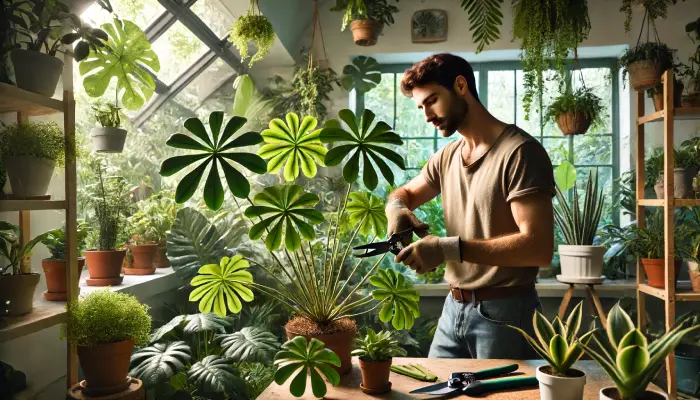
This practice helps to improve air circulation and light penetration to the lower parts of the plant, which is vital for its growth and vigor. Pruning should ideally be done in the spring or early summer to allow the plant to recover and grow back healthier and more robustly quickly.
Umbrella Tree Growth Rate and Expectations
Umbrella trees are known for their moderate growth rate, typically adding about 6 to 10 inches per year under optimal indoor conditions. When cared for properly, these plants can reach impressive heights, sometimes growing up to 15 feet tall indoors. However, their growth can be controlled by the size of the pot and the frequency of pruning. Keeping the umbrella tree in a smaller pot will restrict its root development and overall length, which can be desirable for keeping the plant manageable within limited indoor spaces.
Regular pruning also helps maintain a desired shape and size, making it essential to managing the umbrella tree’s growth. Knowing and managing these growth expectations are vital for any plant owner who wishes to integrate the plant effectively into their living space.
Addressing Schefflera Common Problems
Schefflera plants are relatively easy to care for, but like any houseplant, they can encounter a range of everyday issues. Overwatering is one of the most frequent problems, leading to root rot, while underwatering will cause the leaves to droop and brown at the tips. Proper watering practices are crucial—only water when the top inch of the soil is dry.

Additionally, insufficient light can cause leggy growth and sparse leaves, whereas too much direct sunlight can scorch the leaves. Pest infestations, including aphids, spider mites, and scale, can also occur, particularly if the plant is stressed. Regularly inspecting the plant for signs of distress and maintaining consistent care practices will help prevent these common issues and keep the plant healthy.
How to Treat Umbrella Tree Diseases
Diseases in umbrella trees are typically the result of improper care, particularly in watering practices and environmental conditions. Common ailments include leaf spot diseases and powdery mildew, which can manifest when the plant is kept in overly damp conditions or if airflow is poor.
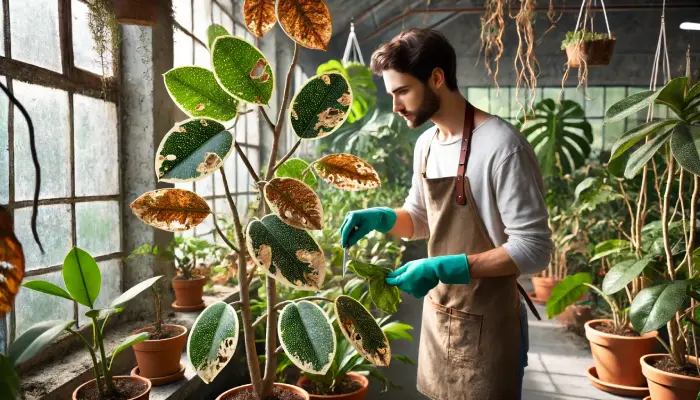
To treat these diseases, first isolate the affected plant to prevent spread to other houseplants. Remove any diseased leaves or branches and dispose of them properly. Improve air circulation around the plant and adjust watering habits to ensure the soil is moist but not wet. If necessary, apply fungicidal sprays that are safe for indoor use, following the manufacturer’s instructions. Regular care and monitoring are vital to preventing and managing diseases in umbrella trees.
Summary
Caring for an umbrella plant, whether it’s the larger Schefflera or the more compact dwarf umbrella tree, involves understanding and addressing its specific needs to ensure it thrives in an indoor environment. Key aspects of care include providing the right amount of light, maintaining proper watering habits, and ensuring the plant is in an environment with suitable temperature and humidity levels. Regular pruning and timely re-potting are essential to promote healthy growth and prevent common problems such as root rot or pest infestations. Following these guidelines will help you enjoy the beauty and benefits of your umbrella plant for many years.
FAQ
Q1: Do umbrella plants need direct sunlight?
A1: Umbrella plants prefer bright, indirect sunlight rather than direct sunlight. Exposure to direct sunlight can cause the leaves to scorch, whereas indirect light will encourage healthy growth without the risk of burning the plant.
Q2: How can I make my umbrella plant grow faster?
A2: To encourage faster growth in your umbrella plant, ensure it has optimal growing conditions. This includes placing it in bright, indirect light, maintaining consistent moisture (allowing the soil to dry slightly between waterings), and feeding it with a balanced fertilizer during the growing season. Additionally, keeping the plant in a warm room with good air circulation can also promote faster growth.
Q3: Do scheffleras like sun or shade?
A3: Scheffleras prefer bright, indirect sunlight. They can adapt to medium light conditions but will do best with plenty of light. However, they should be protected from intense direct sunlight, which can damage the leaves.
Q4: What is the best fertilizer for Schefflera plants?
A4: A balanced, water-soluble fertilizer, ideally with an equal ratio of nitrogen, phosphorus, and potassium (such as 20-20-20), works best for Schefflera plants. Apply this during the growing season (spring and summer), following the instructions on the packaging for dilution and frequency.
Q5: Why is my Schefflera dying?
A5: There could be several reasons why your Schefflera is dying, including overwatering, underwatering, pest infestations, or diseases such as root rot or leaf spot. Check if the soil is overly wet, which could suggest overwatering. Ensure the plant is not in a drafty area or in direct sunlight, and inspect for any signs of pests or disease. Adjusting the care based on these factors can help revive your plant.
